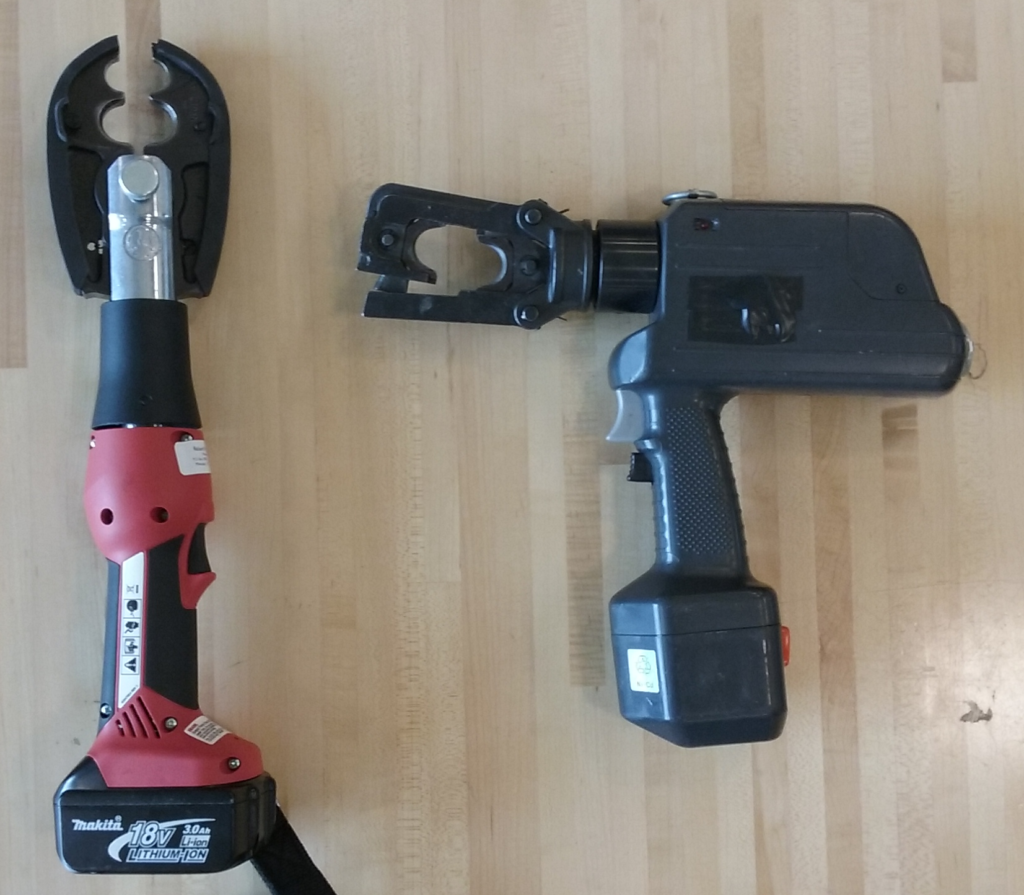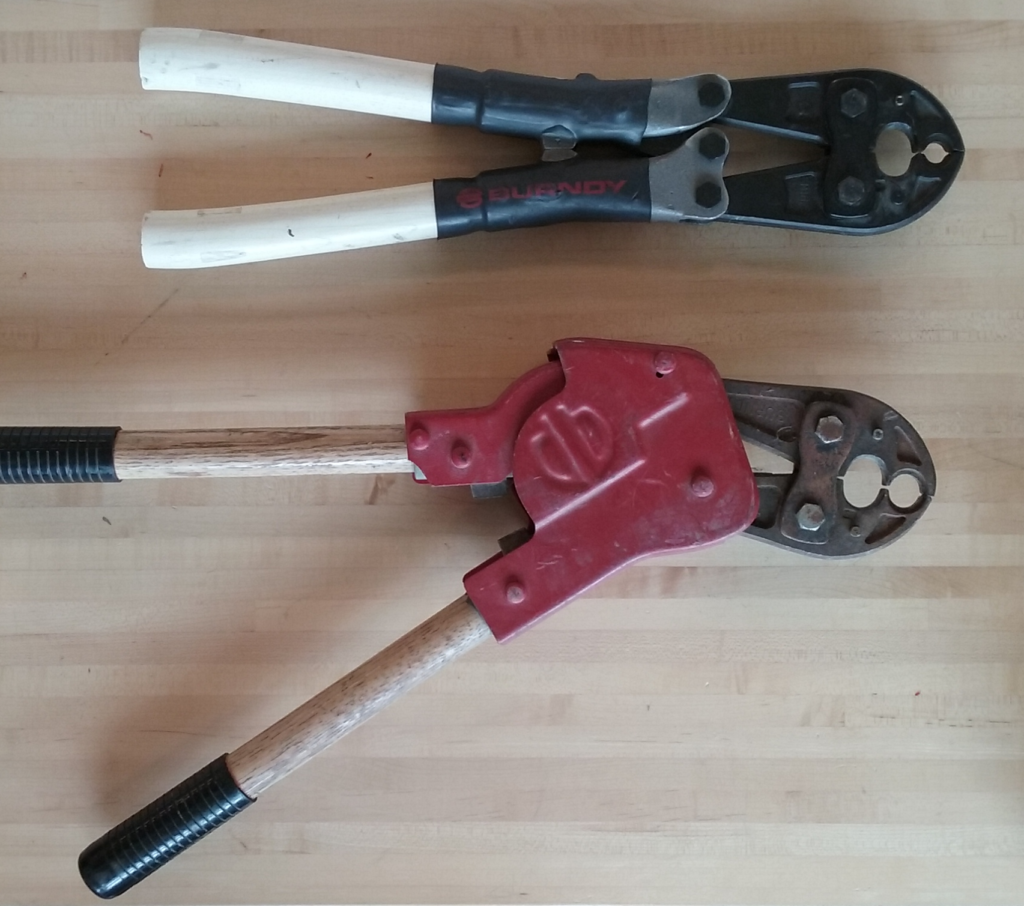EPRI Tool to Help Utilities Prioritize More Than 100 Ergonomic Interventions
During recent site visits with EPRI and several member utilities, Dr. Richard W. Marklin, Jr. was pleased to observe that many power companies have replaced manual tools with battery-powered versions designed to put less stress on the body.
“Battery-powered tools have come a long way over the past 20 years,” said Marklin, a Marquette University mechanical engineering professor and EPRI principal investigator who has worked with electric utilities for two decades to reduce physical stress and workplace injuries.
With a manual compression press, one of the most physically stressful tasks for line workers is crimping electrical connectors to hold together two power line sections. Ergonomics researchers have found that only 1% of females and 50% of males can exert the force needed to make one manual crimp of a connector. Using a battery-operated press, nearly everyone can perform this common task. Current battery-powered models are smaller and lighter than older models, and they use an inline, rotating grip instead of a pistol-grip to reduce strain on joints (see photo).
The use of battery-powered tools is one recommendation in a series of seven handbooks that Marklin’s team has produced with EPRI’s Occupational Health and Safety Program over the past 15 years to help utilities reduce occupational injuries and related costs. Handbooks are written for specific groups of utility workers, such as overhead line workers, underground and substation technicians, and mechanics and electricians. They highlight tasks with risks of injury along with interventions to reduce injuries and improve safety. According to EPRI’s ongoing Occupational Health and Safety Database study, about 3% of line workers have ergonomics-related injuries each year, and all injuries to line workers accounted for 28% of medical claim costs for electric utility workers from 1995 to 2013. “These results have revealed the high percentage of medical claims costs related to ergonomic injuries and helped focus our research priorities in this area,” said Dr. Lovely Krishen, program manager of EPRI’s Occupational Health and Safety Program.
“Members have reported a decrease in ergonomic-related injuries after adopting EPRI-recommended interventions,” said Krishen. “It is satisfying to see direct safety benefits from this research.”
Now EPRI, Marklin, and Duke Energy are developing a decision tool to help utilities quickly prioritize and apply the approximately 100 ergonomic interventions described in the handbooks. When completed in 2017, the software will integrate a decade of data from four utilities on ergonomic interventions, along with information from the EPRI handbooks on each intervention’s potential time savings, occupational health benefits, and cost to implement.
Utilities can use the tool to compare interventions with respect to potential costs and benefits. Comparisons will be possible both within an occupational group and across groups, such as overhead line workers and manhole/vault workers.
Site visits were integral to the tool’s development, relying on the first-ever formal survey of utilities’ ergonomics interventions over the past decade. During visits to four major electric utilities, Marklin and EPRI researchers asked safety personnel to answer three questions about each of the 100-plus interventions in the handbooks:
- Did the utility consider changing work processes?
- Did the utility then change work processes?
- If so, why?
EPRI-member utilities have been implementing recommendations in the handbooks for 15 years, and the preliminary survey results confirmed that among the most common interventions are replacing manual tools with battery-powered versions.
Bucket Truck Controls: Next in Line for Ergonomic Redesign
For years, the EPRI ergonomics research team has heard anecdotal reports from overhead line workers about how operating the aerial bucket on a bucket truck can tire arm and hand muscles. Workers reported that the typical pistol grip used for bucket control causes muscle fatigue in the forearms.
Informed by years of research with EPRI’s members, development is underway for a pistol grip powered by the same batteries used in common cutter and crimping tools to reduce the force needed for operations and to decrease muscle fatigue.
Slated to be ready for service in 2017, replacement should be simple, requiring only the removal of four bolts and the old grip, and attaching the new one with similar fasteners.
EPRI Technical Expert:
Lovely Krishen
Further Resources:
- Ergonomic Interventions for Manhole, Vault, and Conduit Applications
- Ergonomic Interventions for Electrical Workers in Fossil-Fueled Power Plants
- Ergonomics Design Handbook for Fossil-Fueled Electric Generating Stations
- Ergonomic Interventions for Plant Operators and Mechanics in Fossil-Fueled Power Plants
- EPRI Ergonomics Handbook for the Electric Power Industry: Ergonomic Design for Substations and Ergonomic Interventions for Overhead, Underground, and Substation Applications
- Process Guidelines for Acquisition and Ergonomics Guidelines for Vehicle Maintenance
- Ergonomic Design and Specifications of Turnkey and Upfitted Fleet Vehicles






